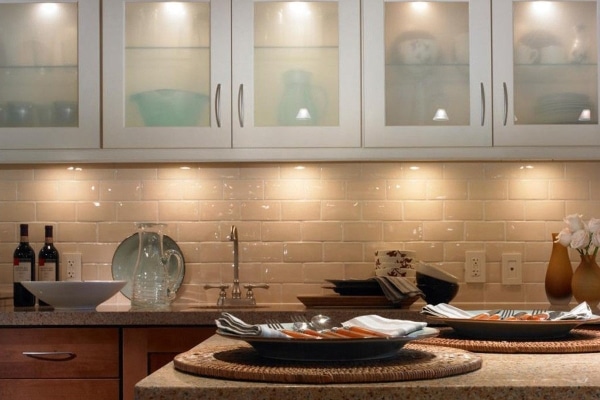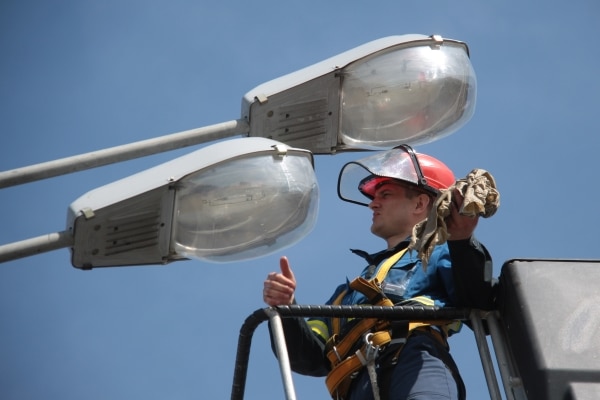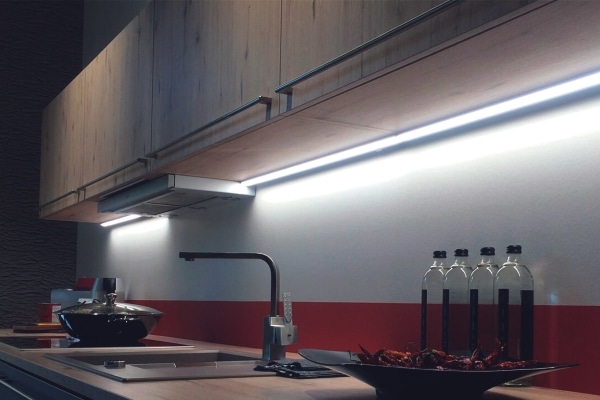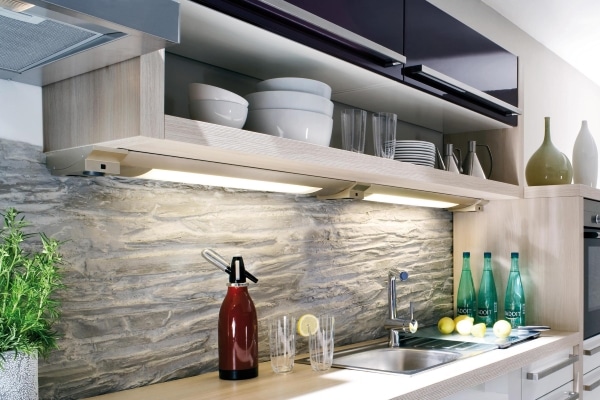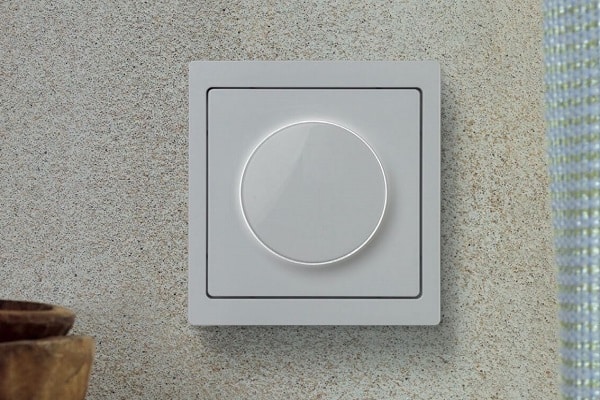An aquarium is a habitat for fish, vegetation, shrimps, snails, etc. Most of the inhabitants cannot fully exist without lighting. Often the sun’s rays are not enough and the aquarist should install additional lights. The best solution is LED lamps.
- Why do you need aquarium lighting?
- How is lighting arranged?
- Advantages and disadvantages of LED lighting
- Comparison of types of light sources
- Types of fixtures for the aquarium
- Lamps
- Searchlights
- Ribbon
- What to look for when choosing?
- Spectral composition of light
- Color reproduction
- How much light do plants need?
- daylight hours
- Power calculation
- Calculation of lamp power for an aquarium
- Choosing the power of the lamp for the aquarium
- How to count wrong?
- What is the best way to install LED lamps?
- Top 7 best lamps for aquarium plants in the LED category
- Aquael LEDDY SLIM PLANT 5W
- ISTA LED 90 cm, 44 W
- KLC-36A Finnex Planted + 24/7
- CHIHIROS WRGB-2
- ADA AQUASKY 602
- Kessil H160 Tuna Flora
- Aqua-Medic Lamp LED Qube 50 Plant
- How to make a LED device for an aquarium with your own hands?
- Popular questions
- Can neon lights be used?
- How profitable is it to use LED aquarium lights?
- Should I order lamps from Aliexpress?
- How to change the lamp?
- Feedback from aquarists
Why do you need aquarium lighting?
One of the reasons to install a lamp in an aquarium is to observe pets. If the tank is installed far from a source of natural light, the vital activity of the fish will be invisible, the color of the plants will be dull and barely distinguishable. But the lamp performs a number of other functions:
- Provides vegetation growth. Aquatic flora require light for photosynthesis, which produces oxygen for fish to breathe.
If the planted grass develops actively and correctly, the formation of algae and growths will not be noted in the home pond. The larger and healthier plants with a strong root system, the less growth of lower species. The second negatively affects the aquatic environment and the life of pets. - Creates conditions for a full existence. The light in the aquarium helps the fish find food, shelter, navigate in space, hunt, etc.
- Responsible for metabolism. With a lack of light, some types of fish begin to suffer from indigestion.

How is lighting arranged?
First of all, plants require proper lighting than animals. A lack of light leads to a slowdown in the processes of photosynthesis. This entails a lack of oxygen and the death of fish.
Light itself is a complex of rays of different shades. Spectrum from red to violet. Each shade has its own characteristics:
- Red cannot penetrate to great depths. Illuminates only the grass floating on the surface of the water.
- Blue. Reaches the bottom. Used to illuminate deep plants.
- Orange with red undertones. Helps increase the formation of carbohydrates during photosynthesis and are absorbed by chlorophyll.
- Violet. Light inhibits the growth of certain parts of the plant. Such exposure turns them into compact plantations with thick leaves.
To create a good atmosphere in the aquarium, to restore the biological environment, it must be equipped with full spectral lighting.
Advantages and disadvantages of LED lighting
First of all, aquarists prefer LED lamps because such lighting is economical. LED lamps consume electricity several times less than other sources.
Other benefits:
- Long service life. It is equal to 3-5 years.
- Resistance to mechanical impact. Fragile parts are not provided in LED lamps, there is no glass in the body.
- There is a waterproof coating. Given that the power is not high, the use of such a lighting device is considered as safe as possible.
- Does not affect water parameters. Lamps are not capable of heating water.
- Does not harm health. Unlike some types of aquarium lamps, LED does not contain harmful substances like mercury.
- Wide spectral range. You can easily pick up the source necessary for the inhabitants of the aquarium.
- Easy to use. If one lamp burns out, this trouble does not affect the operation of the others.
- Fire safety. The probability that a fire will occur from LEDs is low.
- High performance. Lamps can work uninterruptedly till 12 o’clock. There is no heating observed.
- Easy installation. Even a beginner can install LED light in an aquarium. And you do not need to call a specialist to connect to the power supply.
The list of advantages is huge, but there are also disadvantages:
- they have not yet become widespread, which means their cost is higher;
- in order for the lamps to last longer, you need to additionally purchase a special power supply;
- it is important that the diode lamps are well cooled, a radiator, which is relatively expensive and adds weight and massiveness to the aquarium, will help fight overheating.
Comparison of types of light sources
LED lamps are not capable of glowing, they do not give off heat – these are the main differences between LEDs and incandescent or halogen lamps. Preferring an economical option, you do not need to buy a cooling device.
Other features that make diode lighting more advantageous than others:
- there is no mercury in the design of lamps, as is the case with fluorescent devices;
- diodes at low power emit a lot of bright light – for every watt there are 70-120 Lumens, depending on the model;
- There is a light spectrum that is absent from all other lamps;
- LED lamps illuminate every part of the aquarium at any depth.
Types of fixtures for the aquarium
Manufacturers of LED fixtures produce lighting fixtures in various interpretations. The choice is made not only on the basis of personal preferences, but the volume of the tank.
Lamps
The most popular type. Suitable for small ponds – up to 60 liters. Differ in efficiency and availability. Typically, lamps are mounted on the lid of the aquarium, where plinths of a certain size are prepared in advance. If this is not the case, installing a lighting device is not difficult.
Searchlights
Expensive option for LED lighting. The main features are water resistance and the ability to function under water (a short period of time).
Spotlights are mounted to the tank lids or walls, but on condition that the thickness is at least 2 cm. This is a good solution for large aquariums from 100 liters, because the power is 50 watts.
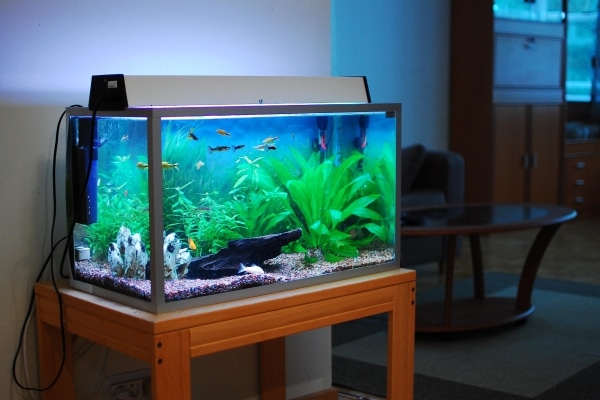
Ribbon
The lighting device is distinguished by its strength, resistance to vibrations. It is not afraid of mechanical influences and is inexpensive. For aquariums, there are 4 types of tape on sale: SMD 3528, 5050, 5630, 5730. The first are purchased for tanks up to 30 liters, the latter are able to illuminate a 100 liter capacity.
What to look for when choosing?
The choice of LED devices is great. In order for it to perform all its functions, it is important to make the right choice. The main focus is on several criteria.
Spectral composition of light
Kelvin is a unit of degrees that are formed when the lamp is heated. In color terms, it looks like this: at first the rays of light are red, then the color changes to yellow, green and blue, gradually turning into purple. Designated with the Latin letter K.
At low values, the hue of the rays will be red or yellow, it does not become purple. Such lighting will not be enough for representatives of the flora. A high degree helps the light spread evenly. 5500K are able to meet the needs of all aquatic inhabitants.
As a comparison, we can take indicators: 4000K natural light, 3000K warm white light, 5000K cold white light.
Color reproduction
This parameter (CRI) directly affects photosynthesis. It shows how natural the conditions for vegetation will be. Referred to as Ra. Ideally, the value should be 100.
When choosing, it is worth considering the color rendering characteristic. It can be from 50 to 100. Up to 80 units, the lighting device shows a weak transmission. From 80 to 91 – medium, from 92 and above – high.
Now on store shelves you can’t find a lamp with an indicator below 80. A lighting device with a CRI of 100 and 5500K shows maximum efficiency.
How much light do plants need?
In order to determine how much light aquatic vegetation requires, 2 values must be taken into account: lux and lumens. The first gives a definition of the amount of light falling on the flora, the second – the amount of light that the light source produces.
To find out how many lumens are in the device, you should multiply the area of \u200b\u200bthe aquarium by lux. For example, light-loving plant varieties need lighting of 15,000 Lux. The tank area is 0.18 sq. m. Having multiplied, it turns out that you need a lamp of 2700 Lumens.
daylight hours
For aquatic plants there is no concept of day and night, the process of vital activity does not stop for a second. On average, normal photosynthesis requires about 6 hours of intense light.
In order to bring artificial habitat conditions as close as possible to natural ones, it is also necessary to provide a weak transmission of light for 3 hours in the morning and the same amount in the evening. Thus, an imitation of sunrise and sunset occurs.
It is important not to forget the age of the plants. For young animals that have just settled in the aquarium, 3 to 5 hours of illumination is enough. After 10 days, daylight hours can be increased to 6 hours. The additional 3 hours should be progressed gradually.
Power calculation
On average, LED lighting fixtures produce between 80 and 100 lumens per watt. Expensive models from leading manufacturers can have values \u200b\u200bof up to 140 lumens per watt. The LED has low power with high luminous flux . This means that a large number of bulbs will not be needed to fully illuminate the aquarium.
Calculation of lamp power for an aquarium
For a tank with a volume of 100 l, lighting from diode lamps is needed, the total power of which is 50 watts. These are the averages. If there is a lot of vegetation in the aquarium, then the total power can be increased to 100 watts.
For a newly populated reservoir, a luminous flux is not required. In this case, it is permissible to focus on the average values at the time of purchase of the lighting fixture.
Choosing the power of the lamp for the aquarium
Power is indicated in W and is calculated per 1 liter of water. An indicator of 0.4-0.5 W / l is suitable for aquariums where a small number of plants are present.
If there are a lot of decorative representatives of the flora, then you should adhere to the indicator of 0.5-0.8 W / l. In this case, active growth will be ensured and a bright natural color will be noted.
A power of 0.8-1 W / l should be chosen in case of a dense planting of flora.
Calculations are not always correct, therefore, having installed an LED device, you should monitor the reservoir. If algae growth is noted, the color of the water acquires a green tint, which means that there is a lot of light.
The formation of brown spots on the foliage indicates a lack of light. It is necessary to select a lamp of a different power. It will not be possible to fill the shortage with the duration of daylight hours, the situation may worsen.
How to count wrong?
Earlier, when LED lamps only appeared on the market, the power calculation was carried out on the basis of the rule – 1 W per 1 liter of water. But at this point, the fact that diodes are distinguished by a strong luminous flux at the same power as incandescent lamps was not taken into account. If you buy a lighting fixture according to an outdated rule, it will not be useful.
What is the best way to install LED lamps?
The best location for the LED lamp is under the lid of the aquarium. The reason is that the inhabitants of the reservoir in the wild receive light only from the sun, which sends its rays exclusively from above. By creating this at home, pets will feel better.
Many prefer LED strips. This type of device is sold everywhere, it is inexpensive and easy to install. At the same time, animals and plants have enough light from such an attribute.
How to install the ribbon:
- Cut the LED strip to the desired length.
- Stick to the lid of the aquarium using a sticky layer. In its absence, attach to a special glue for aquariums or double-sided tape. Location – around the perimeter of the lid.
- Connect the power supply wires to the cables coming from the tape.
- Seal the junction of the LED strip and the power cord with a silicone sealant used in the aquarium trade.
- Turn on and check the operation of the lamp. The connection to the power supply must be made outside the aquarium.
At the time of work, do not forget about the polarity: red cable – plus, black – minus. If assembled incorrectly, the lighting device will not work.
If the tape does not have a moisture-proof layer, then it can only be attached to the lid by first placing it in a plastic flask.
Top 7 best lamps for aquarium plants in the LED category
Several models of LED lamps are on sale. It is recommended to choose from a reliable manufacturer, i.e. lighting fixtures that have shown themselves the best.
Aquael LEDDY SLIM PLANT 5W
Development of a Polish company. The main emphasis was placed on low consumption of electrical energy. For this, the product is in high demand. The manufacturer provided for the installation of spare LEDs on the panel in the form of a lampshade.
If one lamp fails, additional diodes are switched on. It is considered a universal model, because there are sliding brackets. The length of the aquarium for this lamp can be from 20 to 120 cm.
Light output 5800 Lumen, Color temperature – 8000K, LED color – white.
Advantages:
- energy efficiency;
- lamp self-healing function;
- sliding brackets;
- wall mounting type;
- service life of 50,000 hours.
Flaws:
- there are no inserts that make it possible to mount the lamp on thin glass;
- the light module is smaller than the lamp itself, this causes an uneven distribution of light.
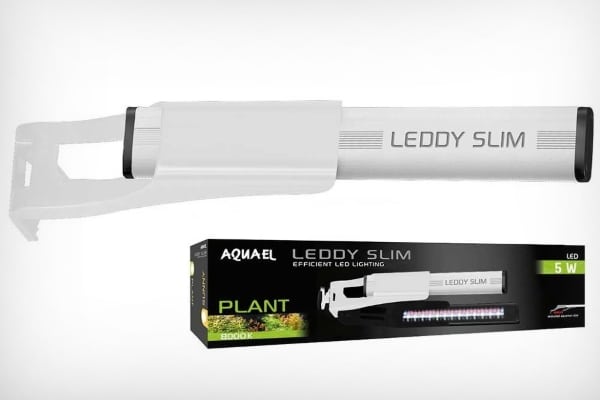
ISTA LED 90 cm, 44 W
This is the Asian flagship. The Taiwanese produce lamps for the aquarium, which have a universal value – 7000K. The line includes full spectrum diodes, white, blue diodes, models with improved light transmission, lighting for small tanks.
The light output is 4382 Lumens. The kit comes with 36 LEDs of red, white, blue and green.
Advantages:
- a full range of;
- development specifically for aquarium vegetation;
- the most positive effect on the process of photosynthesis;
- light scattering at an angle of 150 degrees;
- uniform distribution of beam flows.
The disadvantage is that the lighting is not automated.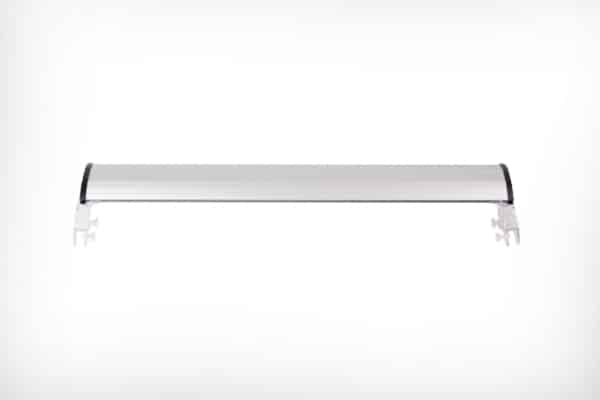
KLC-36A Finnex Planted + 24/7
A US manufacturer produces a fully automated LED lamp that can change light not only for decorative purposes, but to simulate day and night. There is a remote control with which you can create the effect of a thunderstorm or moonlight in the aquarium.
Light transmission – 4382 Lumens, Color temperature – 7000-8000K, there are 108 white, red, blue and green diodes in the kit.
Advantages:
- there is a timer and a control panel;
- imitation of natural phenomena;
- you can program daylight hours;
- automatic mode functioning 24 hours a day, 7 days a week;
- a model was developed specifically for aquarium vegetation;
- uniform distribution of light throughout the tank;
- scattering occurs at an angle of 150 degrees.
Flaws:
- the power cord is not long enough;
- thin lamp;
- The remote only works if you point it straight at the aquarium.

CHIHIROS WRGB-2
Chinese product, which is popular in our country. The reason for this is the affordable price and convenient optimization of light distribution. It features good light transmission (4500 Lumens) and attractive brightness. The lamp is equipped with 3 chips that help emphasize contrasts.
Color temperature – 8000K. Red, white, blue and green LEDs in total 60 pcs.
Advantages:
- crystal diodes;
- automatic spectrum correction;
- the ability to set the modes of day or night;
- imitation of natural phenomena;
- backlight control through a specialized application;
- the case is made of anodized aluminum, which helps the diodes to cool during operation.
Flaws:
- do not immerse the lamp in water, despite the degree of protection against splashes;
- it is impossible to smoothly switch between day and night modes;
- Only black models are available for sale.
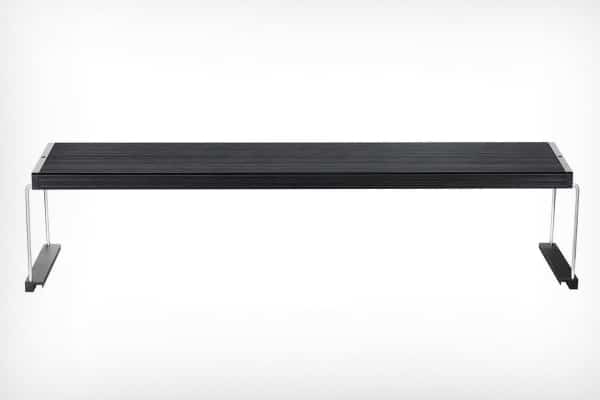
ADA AQUASKY 602
This is not just an LED lamp, a highly specialized Japanese system for growing aquarium plants. With such a device, you can create conditions as close to natural as possible.
The line is represented by two models: 601 has one LED module, and 602 has two. If they are combined on one tank, a three-module lighting system will be obtained. The light output is 2850 Lumens, the color temperature is 7000K. LEDs white, red, blue and green in the amount of 126 units.
Advantages:
- crystal diodes;
- there is a built-in light diffuser;
- ideal solution for participation in aquarium exhibitions;
- light output has the most positive effect on the process of photosynthesis.
Flaws:
- high cost – more than 20,000 rubles;
- shows all its functions in professional aquariums.

Kessil H160 Tuna Flora
This LED lamp is one of the top ones. Having bought such a device, the aquarist will be able to independently adjust the spectrum and intensity of light. This will help the plants develop properly as the lighting can be adjusted based on the growth stage of the vegetation.
This lamp combines 4 types:
- blue color helps plants develop;
- rich red – bloom to certain species;
- red – strengthens the root system;
- purple – for food.
The design has a controller that allows you to automate all processes from a single source.
Advantages:
- the emitted light borders on ultraviolet and infrared radiation, this helps aquarium vegetation to develop rapidly;
- you can program the modes of day and night;
- the most economical consumption of electrical energy;
- diodes almost do not heat up at the time of operation.
Flaws:
- cost not less than 17,000 rubles;
- The controller needs to be purchased separately, it is not included in the kit.
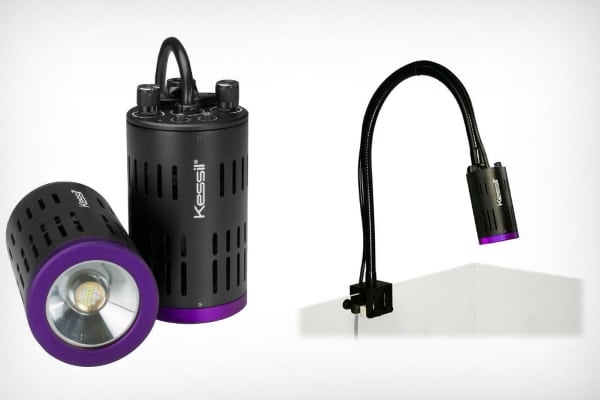
Aqua-Medic Lamp LED Qube 50 Plant
This is a new generation LED lamp. Made in the form of a cube. Uniqueness lies not only in appearance, but also in work. There are 2 channels of settings, natural light, the ability to connect several cubes in series, a variety of ways to mount the device.
Light output – 1364 Lumens, color temperature 3000K warm light and 8000K – cold. 24 white, red, blue, royal blue and green LEDs.
Advantages:
- light flux stimulates the growth of vegetation;
- manual adjustment of color and power of light;
- you can connect an external control unit;
- there is a built-in fan that does not allow the LEDs to heat up;
- as standard, there is a bending tripod and a device for mounting on the lid of the aquarium;
- remote control can be connected.
Flaws:
- price is about 20,000 rubles;
- poorly performs the function of the main lighting;
- for a large aquarium, one lamp is not enough.

How to make a LED device for an aquarium with your own hands?
Not in all cases, you need to spend money and buy an expensive LED lamp. At home, you can independently make a tape with diodes. To do this, you need to take:
- housing from a fluorescent lamp;
- cable;
- plastic tube;
- power unit;
- radiator or cooler for cooling;
- silicone composition for aquarium work;
- glue;
- the LED strip itself.
Action algorithm:
- Cut the plastic tube along the length of the prepared body from the fluorescent lamp.
- Glue the LED strip around the perimeter of the lamp with heat-conductive glue.
- Install the tape in the aquarium and connect.
- If a lot of heat is generated, install a cooler.
Popular questions
Can neon lights be used?
Neon lighting does not harm plants and fish. The choice of such lamps is huge, they all do not have point bright illumination and are scattered evenly. But for some types of vegetation, neon lamps may not be enough.
This type of lighting can be used to bring out the colors of pets, give the aquarium a unique look, and create certain effects.
How profitable is it to use LED aquarium lights?
Given all the pros and cons of LED lamps, we can say that such lighting in an aquarium is a justified measure. Not a single lamp can give such light as diodes. Devices have a positive effect on plants, but do not consume a lot of electrical energy, and one lamp can work for about 50,000 hours.
Should I order lamps from Aliexpress?
Buying aquarium LED lights from a popular Chinese website is not recommended. There are several reasons:
- lamps burn out quickly, so savings are impractical;
- diodes get very hot;
- technical parameters and performance characteristics specified in the instructions do not correspond to reality;
- low-quality goods can provoke the growth of algae and the death of plants.
How to change the lamp?
Anyone can change the lamp in an aquarium. You just need to turn off the power, unscrew the blown diode and install a new one. The main thing before going to the store for lamps is to inspect the burnt-out version so as not to make a mistake with the choice. If the instruction from the lighting fixture remains, then the parameters of the lamps are indicated there. The passport also has a detailed algorithm for changing lamps, applicable to a particular model.
Feedback from aquarists
Pavlov Valery, 24 years old, Moscow. Our apartment has had an aquarium for as long as I can remember. Always lit with incandescent lamps. They constantly had to be changed, because they can work for about 1000 hours. Using such lighting is a costly business.
Replaced 3 months ago with LED. I immediately bought a quality Kessil H160 Tuna Flora. Expensive, but in a few days all the plants, which turned out to be unwell before, recovered.
Potapova Larisa, 47 years old, Cheboksary. My aquarium is not a place of residence for fish, but more of an herbalist. I grow several unique species of plants, fish, all 6 individuals.
I have long given preference to a 0.8 W / l LED spotlight. For several years of use, I have only changed one lamp once, it is easy to do. I am glad that all plants, even the most light-loving ones, grow well.
LED aquarium lamps are lighting fixtures that have recently appeared on the market. They are relatively expensive, but the purchase is justified. Lamps consume little energy, emit good light, have a full spectrum, help plants develop correctly and quickly, forming a biological balance inside the home pond.

